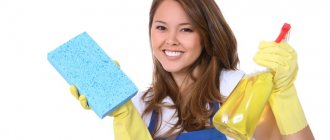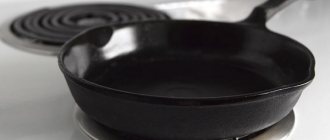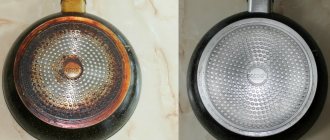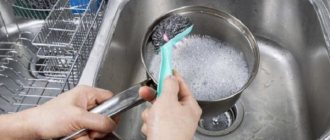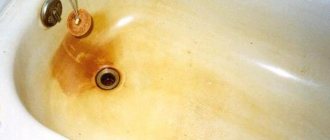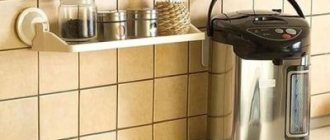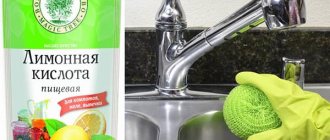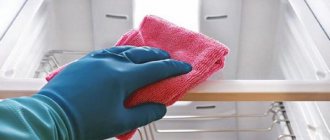Features of cleaning the refrigerator from yellowness
It is always easier to prevent a problem than to solve it, so it is advisable to carry out regular competent care of household appliances and not bring the situation to a deplorable state. It is important to regularly keep the refrigerator compartment clean. What does that require?
- It is important to ensure that there is no accumulation of various types of pollution every day. It is better to immediately remove small dirt with a damp cloth than to wash off dried dirt later.
- It is advisable to wipe the unit doors at least once a week to remove greasy marks and fingerprints.
- There is no need to place dirty dishes on the shelves.
- It is imperative to constantly monitor the freshness of products. Anything that has gone bad goes straight into the trash bin.
- All products must be stored in closed containers or other containers.
- You need to clean your refrigerator at least once every 2-3 months.
- When cleaning, do not use hard brushes, sponges or scrapers, as they can damage plastic surfaces and leave scratches and abrasions. A soft sponge and liquid cleaners work best.
It is optimal to carry out routine maintenance of a refrigerator without defrosting once a week - you need to wipe it outside and inside, including the rubber seal, and throw away everything that has accumulated in excess during the week.
Laundry soap
The first thing that comes to mind when you need to clean a plastic product is laundry soap. It is effective both when washing white clothes and when cleaning window sills and countertops. However, it will only help if the material has changed color due to dust or grease. How to whiten yellowed plastic:
- grate the soap on a medium grater or finely chop with a knife;
- pour a small amount of warm water to make a soap solution;
- wash the contaminated areas with intense circular movements using a sponge or soft brush;
- leave the plastic soapy for 30-60 minutes;
- Remove soap residue with warm water.
If the structure of the plastic element has become very dark, then this method will not work. It is recommended to repeat the procedure several times a month and try to wipe the surfaces more often with a damp cloth.
How to properly clean the inside of a refrigerator
After some time, after operation has begun, the same most common problem very often arises - internal contamination of equipment surfaces.
Most often this is the appearance of yellowness. Moreover, even if you regularly clean, tarnishing and yellowing still cannot be avoided - it depends on many factors. In any case, the material will have to be bleached, and then we will talk about how best to do this.
Washing should begin from top to bottom, paying special attention to the far walls, corners and recesses.
Preparing for whitening
Before you start bleaching, you need to disconnect the unit from the power supply. You need to wait for the freezer to defrost and remove all food from the refrigerator.
You also need to remove all the shelves, containers and stands that are inside. You also need to remove all the small elements; prepare a special solution for them in advance, in which the small parts are soaked overnight.
Be sure to clean and disinfect the drain hole on the back wall of the chamber.
How to clean a refrigerator
Yellow spots appear from irregular cleaning, sunlight and many other factors. Often yellow spots appear because food debris has become embedded in the plastic surface.
When the refrigerator looks neat on the outside, this does not mean that there are no germs and bacteria on its surface that can get inside and onto the food.
The best option is to begin eliminating them in a timely manner. But it happens that the appearance of stains does not depend on regular cleaning, and in this case you can use store-bought refrigerator cleaning products or folk remedies.
Cleaning the inside of the refrigerator is most important because it directly affects the quality of the food.
Sponge and soap
Using soap is not as aggressive a method as many others. It is considered the most delicate. However, its action will be effective if we are talking about yellowness that appears due to greasy plaque.
To make it more convenient, it is better to warm up the soap slightly.
To get rid of yellowness with soap, you need to grate half a bar of soap (you can use laundry soap) and dissolve it in warm water. The surface on which yellow spots appear is treated with a sponge soaked in the solution.
To wash glass shelves, use only cool or lukewarm water. Due to temperature changes, the glass may crack or break.
There is no need to rinse off the solution for half an hour. After half an hour has passed, the solution can be washed off with plain water and wiped dry.
Alcohol
The result from using alcohol will be much better than in the previous version. As a standard, you need to moisten a cotton pad and wipe the surface on which yellowness appears.
It is important that the aggressive agent does not remain on the surface of the refrigerator.
Important: When working with alcohol, you must adhere to certain safety rules. Windows must be open and gloves must be worn on hands.
If the refrigerator has two chambers, use a dampened cloth to clean both chambers, not leaving out the shelves, containers and racks.
Special means: wipes and sprays
Today, manufacturers offer a wide variety of cleaning products. These can be sprays, gels, wipes, and so on. You definitely can’t go wrong if you choose products intended for the refrigerator, as they already have the right consistency that is suitable for plastic.
Absorbers, special deodorants, and fragrances will help remove odors. Some of them add some aroma to the air, others simply absorb foreign odors by passing the air through a carbon filter.
Bleach
Bleach is quite aggressive, but it copes well not only with yellowness and odors, but also with fungi and mold. It must be used by dissolving it in water. It is also important to follow safety rules: protect your hands with gloves, open the windows in the room.
Before washing the refrigerator with bleach, stock up on plenty of water: if you don’t wash it off in time, the acid will continue to corrode the plastic.
Hydrogen peroxide
For the most advanced cases, hydrogen peroxide is suitable. This method is considered one of the most aggressive. First you need to clean the surface from dust and grease. Then, wipe the surface with a cotton pad soaked in peroxide. After this, you need to rinse the surface with clean water and wipe it dry. This procedure must be carried out at least three times.
The frequency of processing depends on the intensity of use of the refrigerator, its load of products and the type of cooling system.
Additional information: To enhance the effect, you can prepare a solution based on peroxide and hair bleach. For one liter of water, add two tablespoons of peroxide and the same amount of clarifier. The surface must be wiped with a sponge soaked in this solution.
You can use cotton swabs to remove dirt from the folds.
Vinegar
9% table vinegar will also help to cope with the task. Vinegar essence should have a concentration of 70-8 percent.
The product will help remove food residues, mold and yellowness.
Important! Precautions must be taken. Acid is dangerous to human health, so when using it, be sure to protect your hands with thick rubber gloves and ensure the room is ventilated.
In some cases, you can replace vinegar with citric acid.
The product is popular and has received many positive reviews from users.
Toothpaste + ammonia
Toothpaste has abrasive properties, which can help to perfectly clean the surface without causing various mechanical damage. You can mix the components in the following way: you can apply a few drops of alcohol and a little paste to a soft sponge. The resulting mixture must be treated with the surface of the equipment.
This hygiene product will help remove dried stains and restore shine to plastic.
After cleaning, you need to rinse the same areas with clean water and wipe dry. To get rid of odors, you need to leave the refrigerator shaft open for several hours or even overnight.
Do not underestimate minor contamination - pathogenic microorganisms and pathogenic fungi quickly develop, spread and infect stored products.
How to bleach plastic on a refrigerator?
You can bleach the coating on the refrigerator only using traditional methods that will not harm the food. It is allowed to use vinegar, hydrogen peroxide and ammonia.
To clean the plastic, you need to wipe the surface with a cloth soaked in the chosen product. Ammonia has a rather pungent odor, so the windows should be open to create a slight draft.
How to clean the outside of a refrigerator from yellowness
It is much easier to remove stains and dirt from the front of the refrigerator. It will be enough to use cleaning products that do not contain acid.
The final stage of cleaning is washing the outside of the door. The lid of the refrigerator must be wiped of dust, and the door and handle must be cleaned of dirt.
Alcohol or acetone can also be used.
Important! Under no circumstances should you use abrasive powders, as they can scratch plastic surfaces.
Regardless of the type of refrigerator surface - made of stainless steel or painted metal - not all detergents and folk recipes are suitable for cleaning.
Aggressive compounds
Housewives often use alcohol or acetone. It can effectively bleach plastic, but it easily damages products, destroys the structure of the material, and removes the top layer of coating. Therefore, choose aggressive solvents only for rough and thick plastics. Before use, test the effect of the composition on an inconspicuous area.
If you decide to use solvents, soak a cotton pad in acetone or nail polish remover containing the latter. Wipe the plastic and wipe away any traces with a damp cloth. When using alcohol, soak a cloth in the liquid and wipe off the yellowed elements. Rinse off any residue with clean water.
How to clean the rubber band of a refrigerator
The rubber band of the refrigerator is where bacteria and dirt accumulate especially quickly, and it is quite difficult to clean this part. Serious contamination can be prevented by regular cleaning. You can use regular detergents for this.
A perfectly sparkling surface can be achieved by spending a little more time and very thoroughly washing the refrigerator with clean water after using detergents.
To prevent the rubber from drying out (this can negatively affect its tightness), you can lubricate the seal after cleaning. To do this, you can use folk remedies, for example, vegetable oil. However, a more convenient option would be to use modern methods, for example, special silicone lubricants in cans.
After treating with aggressive substances, be sure to rinse the surface area with clean water and dry.
Additional information: If the refrigerator is equipped with a handle, then it is better to open it with its help. Otherwise, the rubber band will constantly move, and germs from your hands will accumulate on the seal faster. The service life will be shortened due to such use.
The main principle for keeping the device clean is regularity and consistency of care.
How to get rid of the smell inside the refrigerator
If the refrigerator has just been purchased, it will have a specific manufacturing smell. To eliminate it, you can use a solution of warm water and soda or any detergent. Using such products you need to rinse the refrigerator both inside and outside. After this, all surfaces should be washed with water and wiped dry, and the doors should be left open for several hours so that the smell completely disappears.
If the refrigerator is not washed on a regular basis, dirt is not removed immediately, or some products disappear during storage, a persistent unpleasant odor will form inside the chamber.
If we are talking about a situation where the smell appeared while using the unit, then you can get rid of the unpleasant smell using folk remedies. You can use:
- solution of vinegar and water (1:1);
- baking soda diluted in water (this solution should be placed in the refrigerator in an open container and changed every three months, the product will absorb odors);
- ammonia is suitable in extreme cases, for example, if even after complete cleaning the smell does not go away;
- crushed charcoal or activated carbon can be poured into a saucer and left in the refrigerator for a day;
- Lemon juice will also help, which can be added to the solution for wiping surfaces.
General cleaning of the refrigerator, which includes defrosting it, should be done no more than once a month.
How to wash without streaks
Drips and stains on the refrigerator look unsightly and can cause damage to the appliance. They are formed as a result of stagnation of water. Constant repetition of such conditions will sooner or later lead to the appearance of rust and yellow spots.
To prevent this, you need to know a few secrets:
- It is good to wipe down the refrigerator after cleaning. This will prevent water from flowing and forming stagnation.
- The appearance of streaks is prevented by wiping with ammonia or other alcohol-containing products.
- Do not leave soap or other solutions on the surface. After washing, they must be removed with clean water.
Supporters of household chemicals can buy special products for cleaning refrigerators. Their composition is designed in such a way that after cleaning you do not have to scrub away stains.
Useful tips for caring for your refrigerator
The question of how to clean a refrigerator from yellowness most often arises when the equipment is already quite dirty. It is better not to let the situation get to this point, but to take care of the product regularly. To summarize, here are a few more tips for caring for your refrigerator.
- If the refrigerator is not equipped with a no frost system, then it must be defrosted periodically.
- Do not use rough means or tools, as the plastic can be easily damaged.
- Cleaning should be regular. It is better to prevent the appearance of yellowness and unpleasant odors.
If you follow these rules, the refrigerator will last a long time and its work will be of high quality.
Why does the refrigerator turn yellow?
@inwomen.ru
Yellowness is formed for various reasons. But there are several main ones. Among them:
- Due to the negative effects of direct sunlight. Ultraviolet radiation provokes partial disintegration of the plastic, which leads to the appearance of a yellow coating.
- Constant temperature changes.
- Additives that are present in the composition of materials.
Also, lack of proper care of the surface leads to its yellowing. If you do not regularly treat plastic parts to remove dirt, this will lead to their damage.
